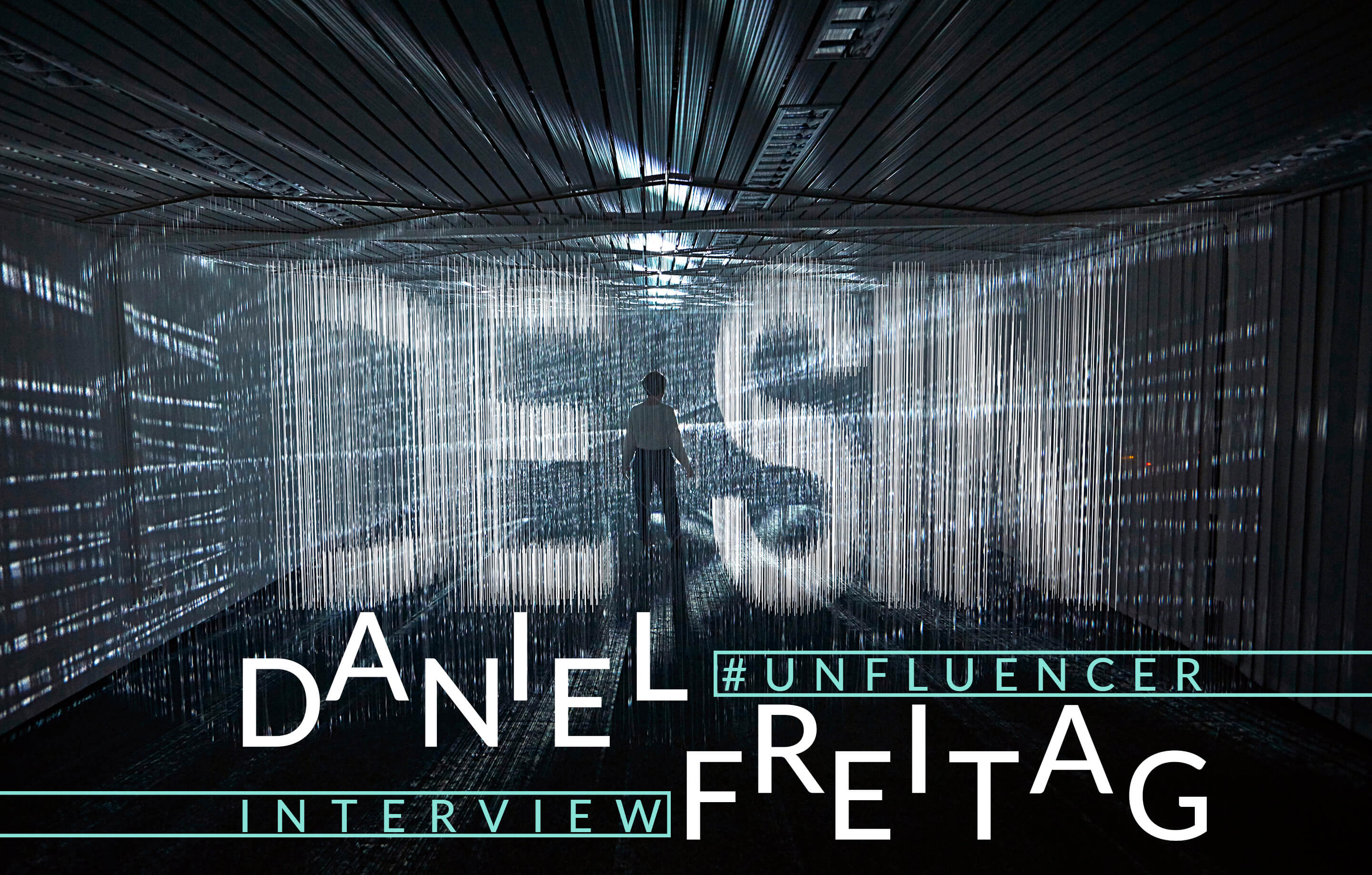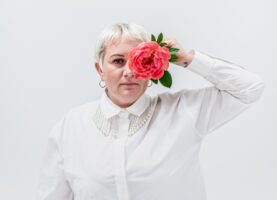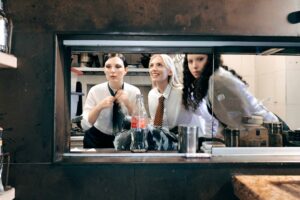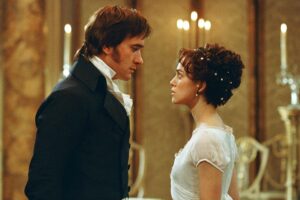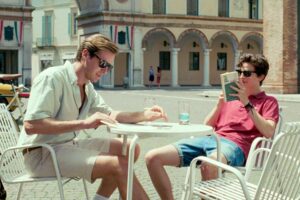Consumers, designers, people… Did you confess yourself?
Have you ever thought about the consequences of your actions, even the smallest and apparently insignificant ones that could, however, have consequences on the world we live in? You’re still on time, we’re still on time.
Because there is always hope, there is always the desire to do better, to be better, for ourselves, others and the surrounding environment. Speaking about it, the brand Freitag, during the Design Week in Milan, reminds us of the importance of thinking about our daily habits and on the “influences” from which we are enchanted every day. With the installation «UNFLUENCER – DE-SINNING THE DESIGNER», in collaboration with the artist George Lendorff, Freitag puts us in front of what is good and bad in design nowadays, offering an opposite but sincere point of view about beauty, the primary use of an object and sustainability.
An exceptional guide for us during this spiritual, or rather moral, journey was Daniel Freitag himself, the co-founder of the brand. Drawing inspiration from the surrounding exhibition, his biodegradable clothes and the Freitag’s manifesto regarding the circular economy, Daniel told us about all the steps of this path of “de-sinning,” in order to share the need for a positive, conscious and rapid change, an idea that can be found in every Freitag product. Conscious of the fact that we are all sinners (even himself, as he admitted smiling), Daniel’s words and the visit to the exhibition have made us even more aware about the current situation, bringing us to confess ourselves and to start over again, and in a better way.
Sustainability, design, and creativity: what do you think is the key element to combine these elements in an ever-new way?
__________
First, consider being wrong which means you need to learn through your all life.
Second, I think it’s a team sport, I think diversity, having processes and organizational structures which provide a space for people to cooperate.
And third, a common purpose within the people who should cooperate.
I think with these 3 elements you probably have a constant process.

Since it’s Design Week, in what ways would you like to see the relationship between design and sustainability developing in the future?
__________
I remember having a speech at a design school and they were talking about design and about sustainable design and, to me, sustainability has to be really part of it. For me, there is no design without sustainability. I think it’s the obligation of designers and creatives nowadays to not just thinking about the primary use, the beauty and the function of the product but also what happens after the primary use. How can you bring it into a circular system and it doesn’t even need to be a product, you can create a service instead out of it, so I think there are now so many different angles to sustainability. And this is just an obligation for creatives and designer to consider this.
It should be an obligation in each and every other field.
__________
Yes, exactly. Not just for the marketing department, but also it should be a core strategy of all the brands and companies. On top of that, you can build your brand image, your aesthetic, but this is in the second layer whereas the base layer should be sustainability for me.

“For me, there is no design without sustainability.”
This exhibition is called «UNFLUENCER – DE-SINNING THE DESIGNER»: what does sincerity of confessing even sins and mistakes represent for you in such a hectic reality, what’s the purpose of confessing?
__________
Of course, we are serious about it but not too earnest or we are earnest about it but not too serious.
Milano Design Week is all about beauty and nice products and aesthetics and beautiful design and so we just had the feeling that if we provided an opposite approach and talk about your design sins would maybe be an interesting opposite perspective. I believe it’s not up to us to be moralistic and say what’s good or wrong but to provide a space where everybody can reflect by themselves what they believe is good or bad.
So that’s why we also have these three zones in our exhibition: the first is more like the moment to “unfluence” yourself, the light installation by George Landorff is something where you kind of lose perspective, you lose the feeling for space and time and this is the slowdown moment.
Afterward – this is quite experimental – we have a confession booth and we play with this commercial system of the ticket you take when you enter the post office and then you are called to the confession; we really tried to combine a learn system from commercial environments and bring it into this little bit funny part of confessing. And there we basically bring people together, sometimes it works out, sometimes people walk in and nobody is coming and they go out again. I saw people for 10 minutes sitting in there and having, obviously, a long conversation, from time to time I sit there and just have some random encounters with people, talking about good and bad design.
And the third part of the exhibition is really getting into the action, so you can hand-check and tag a commitment onto the bag you probably have from another brand, the bag you already own or we also provide a very simple Freitag linen bag where you can tag a statement and bring the discussion out on the streets of Milan.
“UNFLUENCE” YOURSELF
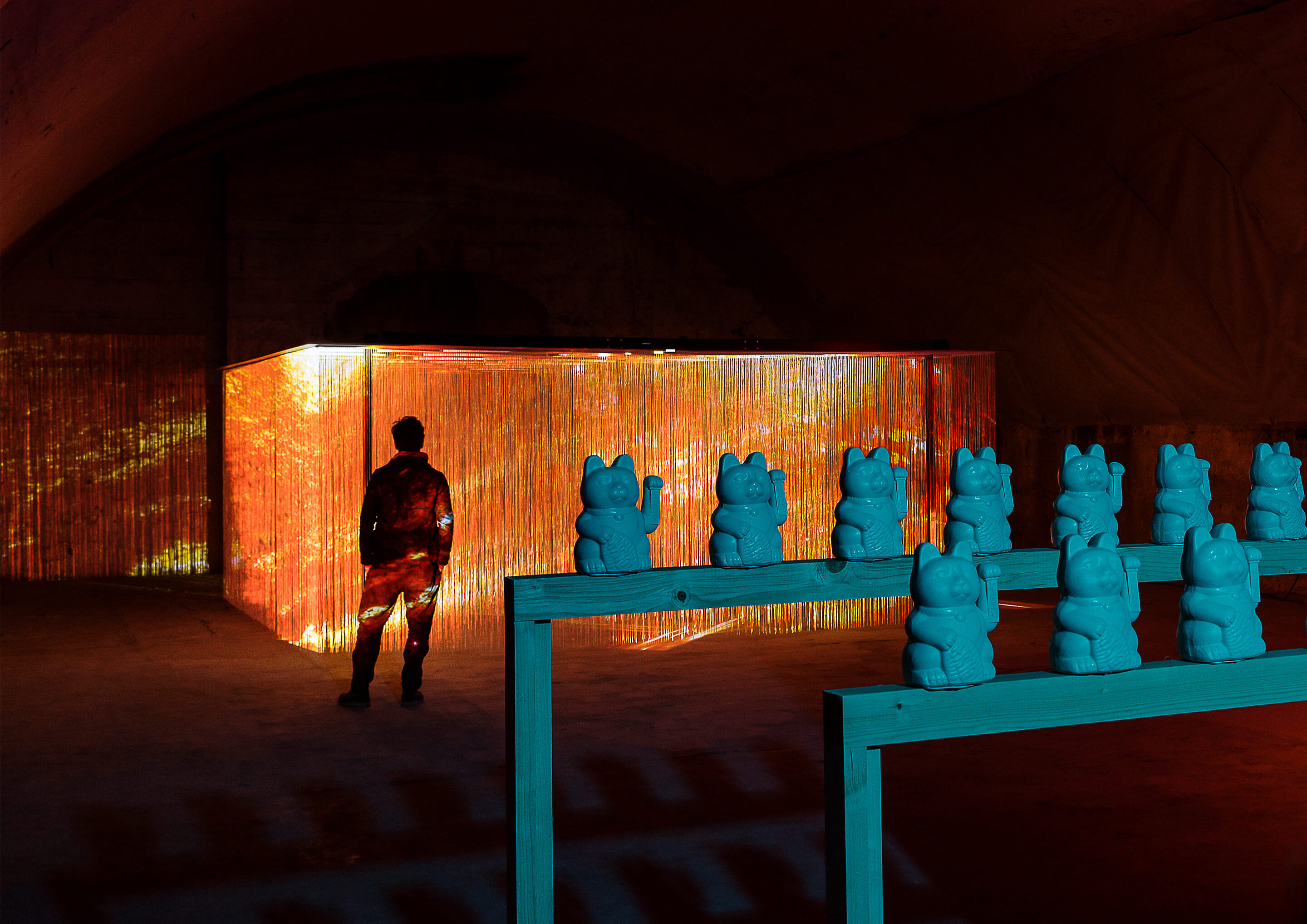
CONFESS YOURSELF

BRING THE DISCUSSION
OUT ON THE STREETS
BY WEARING A STATEMENT YOURSELF

That’s great. We should definitely go to confess right away.
What would you like people to “confess,” or better to admit while visiting this exhibition?
__________
Actually, I don’t care. [Laugh]
The important thing is that we confess.
__________
Yes, exactly. Because I think it’s just about the reflection, what are my personal standards? We provide some ideas, as Freitag, we have our principles, we have created a sort of “Design Manifesto” which consists of 9 points, point number 10 is “please add something” because we consider being wrong. [laugh] So maybe you have a suggestion on how to extend it or what we should throw out. And so we tried to provide some inputs/impulses, where you can start thinking from.
It’s about circular economy, it’s about sharing, it’s about service design, it’s about compatibility that systems are modular and long-lasting, it’s about durability, and it’s also about, as I mentioned, slowing down and win time.

Giving that freedom and the chance to express yourself with freedom, you can have a more complete view of the topic.
__________
Yes, at the end I mean I don’t know what the truth is but I think definitely we see that, somehow, we need to transform. I think the commercial systems where you try to sell fast fashion twice a year, four times a year, six times a year, is probably not the way to go. So really, it’s like, “Ok, how much do I need the things I have? Are they really relevant to me or do I have to declutter my life?” I think this is a discussion that everybody has to take themselves. Some people are happy with a hundred objects in their life, some need a lot more, I think there is no right or wrong but you should probably be aware.
Speaking of fashion, we saw at the press day the biodegradable textile…
__________
I’m wearing it right now, my pants, my jacket, the only thing you can’t throw away is the buttons, but you can re-use them for your next jacket, so maybe the button can survive the jacket or even survive me. [Laugh]
How did you come up with this idea?
__________
It’s this philosophy of really thorough thinking.
You have to think of technosphere, I mean for example this wood (pointing at the bench he is sitting on NDR) can biodegrade so if it gets old it gets more beautiful and if it’s damage you can throw it out in nature and leave it there, just don’t put any chemical on it and it can biodegrade. Underneath there is some metal and this should be from a high-quality one and this is assembled very easy and you can re-use it.
There are certain objects where it’s much harder to reach this, for example with textiles, it’s the combination of artificial fibers and natural fibers: if you put them together you can’t just bring them apart so I think that’s how all the products need to have a concept of technosphere and the biosphere, and they need to be combined very cleverly so that you can detach it after the primary use. This is just a design principle and it’s really hard to reach good solutions, there need to be a lot of effort to make it as simple as possible like this screw-on button (referring to his jacket NDR) because it didn’t exist before, I mean there are millions of buttons on our clothing and there is not one that you can screw off so we invented it. It’s not about saving the planet with the amount of material of this button, but the thinking behind is important, the educational moment when you screw on a button on your jacket, I think you learn something about this circular concept.

“It’s not to save the planet with the amount of material of this button, but the thinking behind is important, the educational moment when you screw on a button on your jacket, I think you learn something about this circular concept.”
What would you suggest to make sustainability a way of life instead of just a trend?
__________
People who probably really understand this topic, they see it, it’s not like a trendy fashion statement that comes and goes. I think as soon as you understand it, you’ll understand that it needs to stay and you can build trends on top of that. So it’s not about a marketing statement, like “we are the sustainable brand.” I mean, that’s the fundament, and on top of that we try to make beautiful clothes, we try to make an individual bag, we try to make functional accessories, and I think this is the real design job: to create an image on top of a sustainable base. And, to me, that’s why also in our message, starting from 25 years ago, we don’t talk first about sustainability, we talk individuality, we talk about functionality, waterproof, long-lasting and the last message is, “hey, by the way, it’s recycled” or “hey, by the way, it’s biodegradable.” That’s how we see it, it’s about the “what,” it’s about the “how,” and at the end it’s about the “why.”
What does creativity mean to you?
__________
Creativity is like a language, a form of expression, and I think to kind of always use your language to make your statements, to make your thoughts visible whether it is with words, or drawings or objects. I believe that’s probably creativity,
kind of express yourself and try to communicate with the world around you.
Credits Cover Picture: Das Bild.
Credits Pictures: Claudia Zalla and Peter Hauser.

